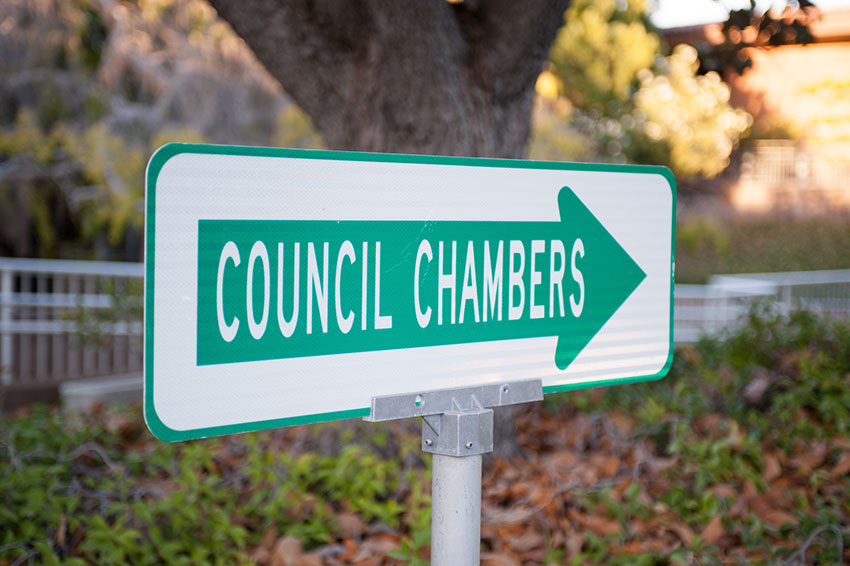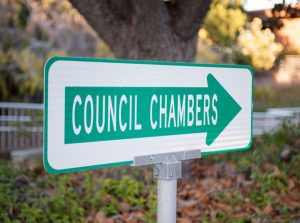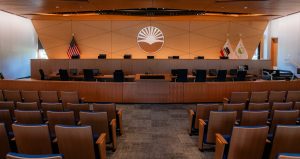Santa Clara’s Parade of Champions could return this year.
The Santa Clara City Council heard a request Tuesday night from a group wanting a $71,000 grant to bring back the parade. The parade, to be held in the City’s old downtown along Lafayette Street, would feature various winners of academic and athletic competitions.
“There is so much to celebrate that we are not celebrating,” said Ana Vargas-Smith, Chair of the Santa Clara Parade of Champions (SCPC) Board.
The parade was a mainstay in Santa Clara until the 1990s, when lack of interest caused it to flounder.
The cost of the event would be about $152,000, but nearly $71,000 of that would go toward City services for the parade. Another large chunk of the cost would go toward hiring a consultant to organize the parade, which SCPC aims to put on in September.
In order to do so, however, the organizers must make things happen quickly. Although the Council approved allocating the money in a unanimous vote, that approval came with strings attached.
Council Members Teresa O’Neill and Debi Davis both expressed skepticism about the board’s ability to attract sponsors, organize the parade and solidify its nonprofit status in such a short time. As a result, the board will need to demonstrate firm sponsorship commitments and obtain its nonprofit status by the end of June in order for the Council to green-light the grant.
Although Jim Teixeira, Director of Parks and Recreation, gave no recommendation, he said there are some “really good benefits” to the parade but added that holding it next year is “more practical.”
O’Neill said she is unconvinced the parade is viable and would like to see a smaller version of it held, perhaps on Fourth of July, and have it gradually ramp up. Council Member Kathy Watanabe said the City has to be “more practical” in its approach.
“I am not going to rain on your parade,” said Council Member Karen Hardy. “Yes, there is a cost, but the benefit is amazing.”
City Manager Deanna Santana said the budget item for the approval of the money, which will be one-time funding from the discretionary fund, will return to Council at its June 25 meeting.
City to Eliminate Architectural Review Committee
The Council also agreed to reconfigure how the City assesses changes to architecture, eliminating the Architectural Review Committee and moving toward a review process by City employees.
The Architectural Review Committee is made up of a Council appointee and two members of the Planning Commission, which is also appointed by the Council.
Andrew Crabtree, Director of Community Development, said the reconfiguration would add clarity to the appeal process and codify guidelines, such as concrete guidelines about the grounds for an appeal. Under the new system, he said, architectural review would go through an administrative hearing process — which would be open to the public — and be allowed one appeal.
Watanabe said the change was a good way to “streamline the process.” Crabtree recommended that appeals for single-family homes appeal to the Planning Commission and other appeals come to the Council. However, Mayor Lisa Gillmor said she would like the Council to have final say on all appeals, a suggestion the rest of the Council supported.
Council Member Raj Chahal stressed the importance of having the City hire an architect to help establish guidelines.
Rob Mayer, an architect who spent four years on the Architectural Review Committee, agreed, saying the “best committees are constituted by professionals.”
“With HGTV, everybody thinks they are a designer now,” he said.
Land Slated for Housing Projects in Need of Special Consideration
The City is set to pay more than $4 million for less than an acre of land to put a grade separation along Central and Lawrence Expressways from Monroe Street to Arques Avenue.
The .72 acre parcel is part of a 30-acre, 994-apartment SummerHill housing project.
Craig Mobeck, Director of Public Works, said the project, which he said could take up to 10 years to complete, will remove signals from that area and “allow traffic to free-flow in that corridor.”
The project is part of the 2003 Comprehensive County Expressway Plan, a statewide initiative to fund road repairs. The nearly $4.1 million used to purchase the land, Mobeck said, would count toward the City’s match needed to receive state money, which amounts to roughly $45 million or roughly 10 percent of its $45 million cost.
The establishment of a Community Facilities District (sometimes also called a Mello-Roos district) to fund infrastructure services at Lawrence Station also saw Council support. The creation of the district establishes a tax on property owners within it to fund these services.
Teixeira said the City expects to collect roughly $350,000 annually to fund services such as parking enforcement, landscaping and road and garden maintenance. The creation of the district, he said, is necessary because the “higher-than-normal standard” of the district’s needs, which would place undue burden on City resources.
The district requires a two-thirds majority vote of residents living within its boundaries. If fewer than 12 residents live there, the vote is instead conducted of current landowners, according to California Tax Data.
Public hearing on the formation of the district is set for April 9.
‘Koreatown’ Designation to be Discussed
A request from a local business owner, Ken Kim, to have the stretch of El Camino Real designated as Koreatown will be put on a future agenda.
Kim spoke to the Council about the designation, rehashing a discussion that is more than a decade old.
Although the Council approved putting the item on a future agenda, it seemed to need more detail, such as some way to gauge interest in the designation from Korean business owners operating in that stretch and some insight in what that designation would mean.
The item will return to Council at an uncertain date sometime after March 26.
Council Awards $1.86 Million in Projects
Via the consent calendar — items considered routine and voted on with a single vote — the Council approved three construction projects.
The first, a $572,700 project, is a signal timing project on Bowers Avenue. That contract went to St. Francis Electric.
A “Safe Routes to School and Pedestrian Infrastructure Improvements” project cost the City another $345,269. That contract went to J.J.R Construction, Inc.
Finally, a contract for $943,057 went to Hot Line Construction, Inc. for the Parker substation project. Despite that project’s cost, a $2.35 million contribution from the developer, Vantage Data Centers, funded the project.
All three companies were the “lowest and responsive and responsible bidder,” according to the agenda report.
Vice Mayor Patricia Mahan was absent. The Council will meet again Tuesday, March 19 in the Council Chambers at City Hall, 1500 Warburton Ave. in Santa Clara.












0 comments